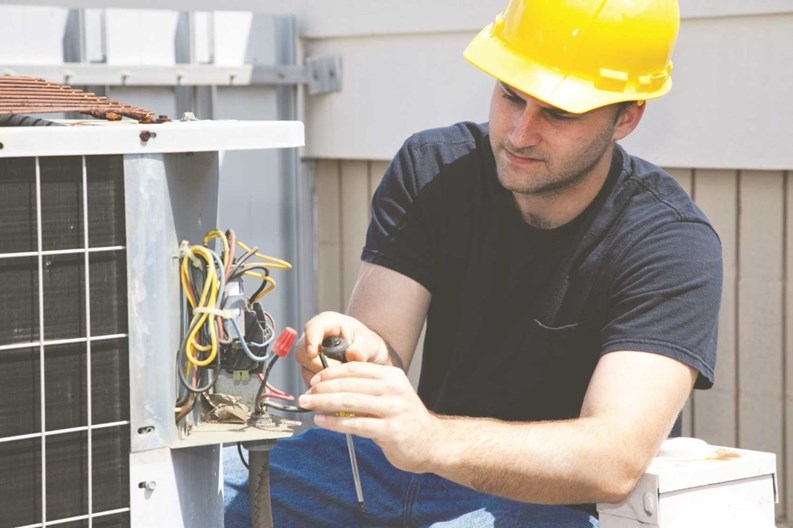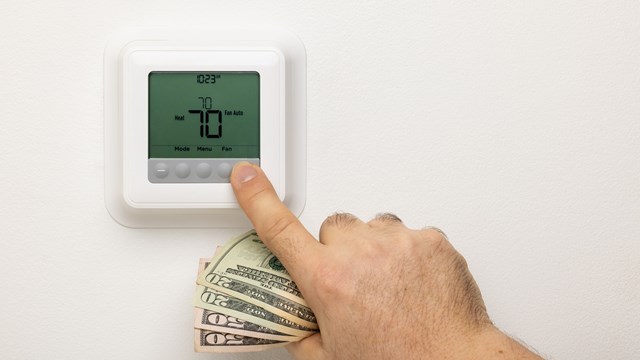Given our chilly winters and blistering hot summers, those living in New York co-ops and condos are keenly aware of the importance of properly working heating, ventilation, and air conditioning (HVAC) systems.
That’s why it’s important for managers and residents to know who is responsible for what and how to properly maintain these systems, which could be a single heating/cooling system for the entire building or individual furnace or cooling systems in each unit. After all, in residences such as large high-rise buildings or townhome communities, a variety of HVAC technologies can be found. HVAC is the umbrella term for the system that includes all the equipment used to ventilate, heat and cool the building, move the air through the ductwork, and have that air filtered and clean for the occupants.
Proper Care
The basic components of an HVAC system are an outdoor air intake, mixed-air and outdoor air controls, an air filter, heating and cooling coils, humidification or de-humidification equipment, supply fans, ducts, a terminal device, a return air system, exhaust or relief fans, self-contained heating and cooling units, a control panel, the boiler, water chiller and cooling tower.
Dave Wagner, district manager at Petro Heating & Air Conditioning in Brooklyn says that for New York condos and co-ops, the most common HVAC system is called a packaged terminal air conditioner (PTAC).
“The general unit is a heating and cooling type of interior/exterior mounted unit. It takes air and it passes it across, it's an electrical unit, it passes it across a heating coil or a cooling coil and blows it into a living space at the desired temperature that an occupant would set it at,” he explains.
Larger high rise residences may turn to water-cooled or chiller boiler systems, which combine the chiller, boiler, pumps and controls into a single package for simple installation and maintenance. A water-cooled system has a cooling tower which cools water that serves all units in a building, rather than each unit having its own. Window AC units still exist but they are falling out of preference because they are noisy and not the most efficient.
Regardless of what type of system your community runs on, HVAC systems are one of the largest and most important systems in your building, so regular maintenance is critical.
“It's kind of the same as your car,” says Kim Leary of Bill Leary Air Conditioning and Heating in Metuchen, New Jersey. “If you don't check the oil and get a tune up on it, you run the risk of it creating a lot more wear and tear on the system and it does not run as efficiently. If you think about your air conditioning and heating system like a car, you only use a car a few hours out of the day but your air conditioning and heating system goes 24/7 so it needs more attention because of the work load that it has. It is definitely something that you want to stay on top of.”
Many industry professionals will agree that checking and changing of the unit filter is a key step in ensuring the health and longevity of your HVAC system.
“Most air conditioning products should have the filter cleaned on a regular schedule based on unit usage, pets, et cetera,” says Richard Nuss, vice president at Islandaire, an national air conditioning and heating manufacturer based in East Setauket, New York. “Without proper airflow any product will not function properly as designed and could decrease the life of the unit and create future repairs that could have easily been avoided.”
Nuss recommends that buildings and unit owners clean their filter at least four times a year and an annual spring checkup of the unit, coils, wall sleeve and other accessories, “to make sure the unit will operate properly for the cooling season,” he says.
In addition to filters, there are a few things that professionals and facilities managers should monitor. Doug Wong, manager at BC Express Inc. in Toms River, New Jersey, says that it is important to ensure that, “motors are amping properly and all burners are burning properly and both pieces of machinery are clean. You want to make sure that the furnace is burning properly, the flame is right and everything is calibrated accurately and there are no health and safety issues. He adds that these suggestions are general and maintenance should be performed according to manufacturer specifications.
According to Michael Vinick, president of Duct & Vent Cleaning of America, and a board member of the National Air Duct Cleaners Association (NADCA), every time the furnace or air conditioner is in operation, dust, dirt particles, debris, pollen, pet dander and other pollutants are drawn into the duct system and must be cleaned.
No matter how simple or complex a system, Wong recommends a monthly check up to ensure all components are in working order and no part has been worn or damaged. He suggests to make sure the filter and outside unit are clean and able to function without “A lot of times we walk into a utility room and we see that everything is packed in and we cannot even get through to service the unit. You want to make sure nothing is obstructing the unit.”
“General maintenance would be cleaning the filters, doing a brush down of the cooling and heating coils, and blowing out any excess debris that may have accumulated around the fan or the fresh air intake exchange, checking to make sure that the unit is functioning properly,”Wagner. “But it depends on the environment too. If the HVAC unit is in an environment that is conducive to dirtier air such as pollution or smokers, you should be cleaning it more often.”
Who is responsible for the maintenance depends on the task at hand. “Most residents and property managers can change filters themselves but a basic 14 point maintenance check should be done by a skilled professional whether that is the condo's in-house maintenance people or calling in a company; that would go beyond most homeowner's skill set,” says Wagner.
What If?
With the economic challenges facing many buildings and residents in 2012, sometimes routine or mundane maintenance tasks may be skipped – to the long-term detriment of the community.
“Any type of device and machine needs maintenance. Every body thinks it's a set it and forget it thing. A lot of people don't clean their filters on a regular basis. How many times have you gone to the back of your computer and made sure that the fan was clean? That reduces the cooling, which makes your computer run hotter and can lead to breakdown. The same thing with a unit in a condo-this is dirty, that is dirty and the unit starts to slow down.” says Wagner.
Additionally, residents should never attempt to adjust or perform maintenance on systems that are building responsibility or parts they do not feel comfortable or familiar with. “Especially with air conditioning, you are dealing with large amounts of freon, which needs to be handled by a trained and certified professional,” says Leary.
Greener Options
With today’s environmentally-friendly way of thinking, a number of HVAC green/energy innovations are finding their ways into New York.
Nuss says that his company offers wall-mounted, motion-detecting thermostats that can bring down heating and cooling costs for residents. The device is equipped with standard motion sensors and door sensors that turn off the HVAC unit when the space is not occupied.
Wong says that new furnaces are much more efficient than the older ones. The federal mandate is that all furnaces have to operate at what he calls 92 percent or higher level, meaning 92 percent of the heat is coming into the unit and eight percent is coming out the fluid pipe. He says that this is much more efficient than older furnaces, most of which operate at only 80/20 percent.
Other co-gen technologies include micro-turbines and fuel cells. By making continuous use of both electricity and thermal energy, condominium residents can save up to 35 percent on overall energy costs.
Also slowly coming into play are the addition of photovoltaic panels, a method of generating electric power by converting solar radiation into direct-current electricity using semiconductors that exhibit the photovoltaic effect. The direct current is converted into alternating current and connected to the building electrical distribution system.
Leary adds that there are ultraviolet lights available for duct systems. They help mitigate the bacteria and debris that get stuck and obstruct airflow.
Final Thoughts
Since the life expectancy of an HVAC system is approximately 20 to 30 years, maintaining it correctly should have it working up to and possibly beyond those years. Without proper maintenance, breakdowns will occur and you may be looking at a full system replacement years earlier than expected.
“Some of the consequences of not performing general maintenance are insufficient heating and cooling, reduced performance in the unit including energy efficiency as well as performance efficiency, and premature system failure,” says Wagner.
Keith Loria is a freelance writer and a frequent contributor to The Cooperator. Editorial Assistant Maggie Puniewska contributed to this article.










Comments
Leave a Comment